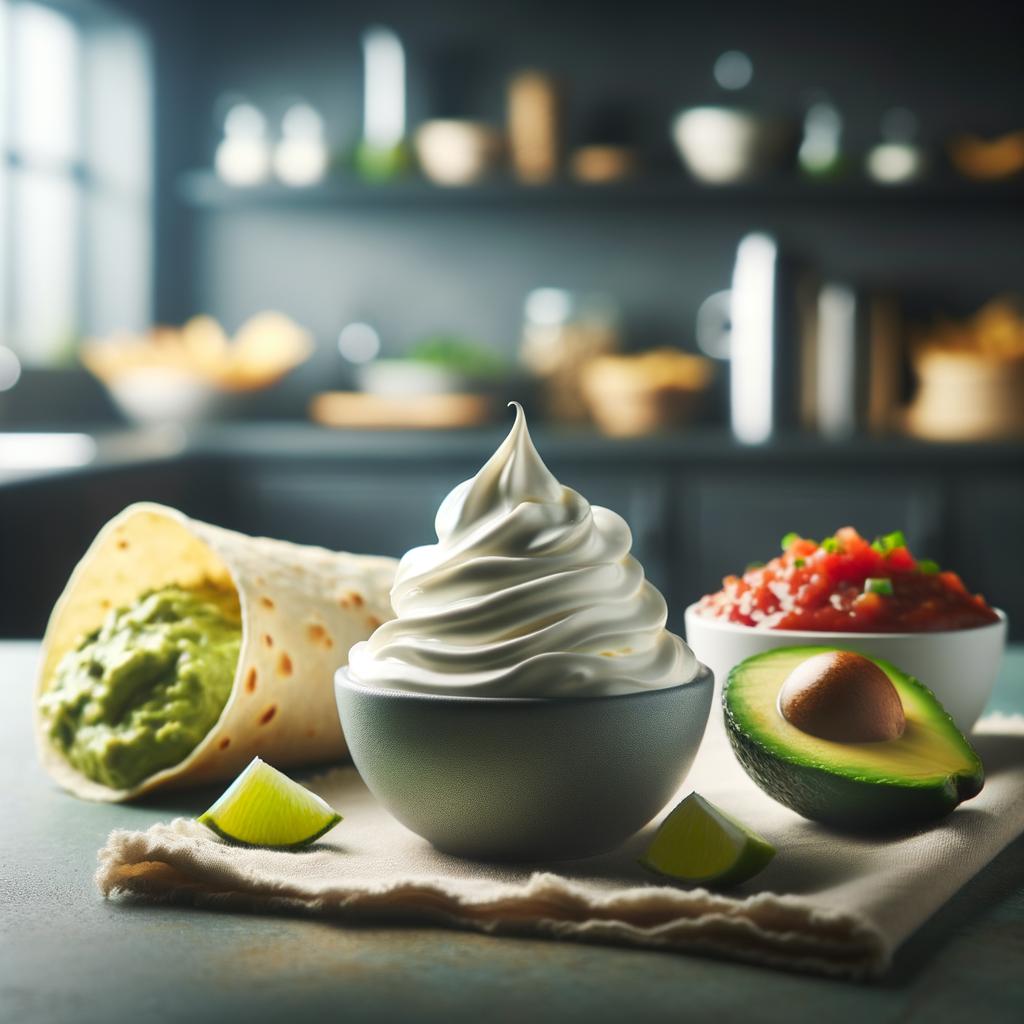Sour Cream, Guacamole, and Salsa

Sour Cream
Description Sour cream, a dairy product, is a delightful paradox of tangy yet creamy. It is a thick, creamy substance with a bright white color and a slightly tangy taste. Its velvety texture and unique flavor profile set it apart from other dairy products, offering a luscious tang that can elevate any dish.
Primary Uses Sour cream is a versatile ingredient used in a variety of cuisines, from Eastern European to Mexican. It is often used as a condiment or garnish, enhancing the flavor of soups, baked goods, and even desserts. In non-culinary uses, sour cream is sometimes used in natural skincare remedies due to its lactic acid content.
History Sour cream originated in Eastern Europe, where it was made by naturally fermenting cream. Over time, its use spread globally, and it became a staple in many dishes, from Russian borscht to American baked potatoes. There are also tales of sour cream being used as a beauty treatment by historical figures like Cleopatra.
Nutritional Information Sour cream is rich in calcium and vitamin A, contributing to bone health and good vision respectively. However, it is also high in saturated fat, so moderation is key. Compared to other dairy products like yogurt, sour cream has a higher fat content but also a unique flavor that makes it irreplaceable in certain dishes.
Guacamole
Description Guacamole is a vibrant green, creamy yet chunky dip made primarily from ripe avocados. It has a buttery texture and a complex flavor profile that is simultaneously nutty, tangy, and slightly spicy.
Primary Uses Originating from Mexico, guacamole is used as a dip, condiment, or salad ingredient. It is a key component in Mexican cuisine, often paired with dishes like tacos, nachos, and burritos. Beyond food, guacamole has cultural significance in Mexico, where it is a staple during celebrations like Cinco de Mayo.
History Guacamole has a rich history dating back to the Aztecs, who called it āhuacamolli, meaning avocado sauce. Over time, its popularity spread globally, and it has become a beloved dip worldwide. There are stories of ancient Aztec emperors feasting on guacamole due to its supposed aphrodisiac properties.
Nutritional Information Guacamole is packed with healthy monounsaturated fats from avocados, which can help lower bad cholesterol levels. It also contains vitamins C, E, and K, along with potassium. Compared to other dips like ranch or blue cheese, guacamole offers more nutritional benefits and fewer calories.
Salsa
Description Salsa, a vibrant and zesty blend of tomatoes, peppers, onions, and spices, comes in a variety of textures from chunky to smooth. Its flavor profile is a balance of sweet, tangy, and spicy, creating a symphony of tastes in every bite.
Primary Uses Salsa is often used as a dip, topping, or sauce in Mexican and Tex-Mex cuisine. It is a key component in dishes like tacos, enchiladas, and huevos rancheros. In terms of non-culinary uses, salsa holds cultural significance in Latin American cultures, often symbolizing a sense of community and shared enjoyment.
History Salsa has its roots in the ancient Aztec, Mayan, and Inca cultures, where it was used as both a food and a currency. Its use has evolved over time, with many regional variations emerging. There are also folk tales of salsa being used in ancient rituals and ceremonies.
Nutritional Information Salsa is low in calories but high in flavor. It is packed with vitamins A and C, which support immune health, and lycopene, a powerful antioxidant. Compared to other condiments like ketchup or mayonnaise, salsa offers a healthier, lower calorie alternative with a robust flavor profile.

